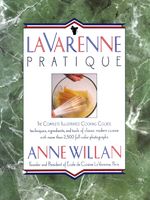Label
All
0
Clear all filters
🔥 Try our grilling cookbooks and save 25% on ckbk membership with code BBQ25 🔥
Cold- and Hot-smoking Techniques
Appears in
By Anne Willan
Published 1989
There are two kinds of smoking: cold-smoking, which is a true preserving technique, and hot-smoking, which partially preserves the food. In cold-smoking, food is exposed to cold (50-85°F/10-29°C) smoldering smoke, so it dries rather than cooks. Chemicals in the smoke kill any toxic micro-organisms, thus preventing the fats in the food from turning rancid. Smoke also gives flavor and a rich amber color. Commercially cold-smoked foods include poultry, salmon, kippers, ham and bacon.
Shellfish such as mussels, clams and oysters need several processes. First they should be shucked and steamed briefly to firm up the flesh. Then they are dry-salted or brined, quickly cold-smoked and finally hot-smoked, each process lasting only about 20 minutes. Many nuts, eggs and cheeses can also be cold-smoked for a distinctive flavor.
Become a Premium Member to access this page
Unlimited, ad-free access to hundreds of the world’s best cookbooks
Over 160,000 recipes with thousands more added every month
Recommended by leading chefs and food writers
Powerful search filters to match your tastes
Create collections and add reviews or private notes to any recipe
Swipe to browse each cookbook from cover-to-cover
Manage your subscription via the My Membership page
Best value
Part of
Advertisement
Related Recipes
-
-
-
-
Related Reference
-
-
-
-
Advertisement
The licensor does not allow printing of this title



